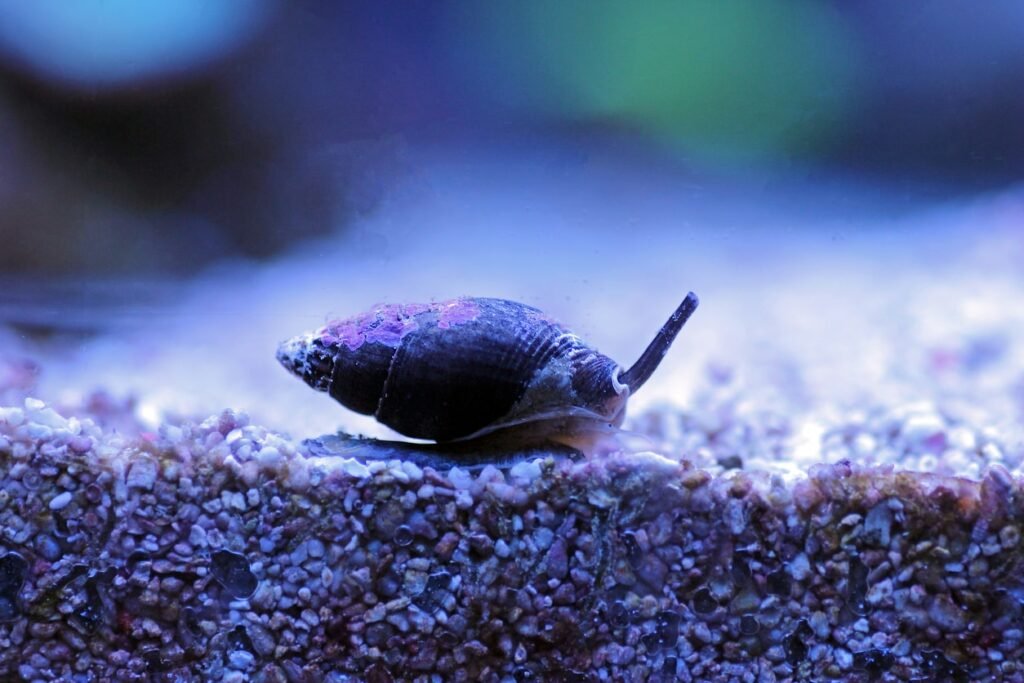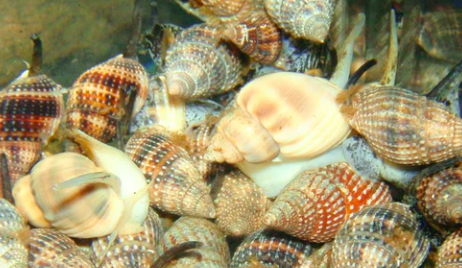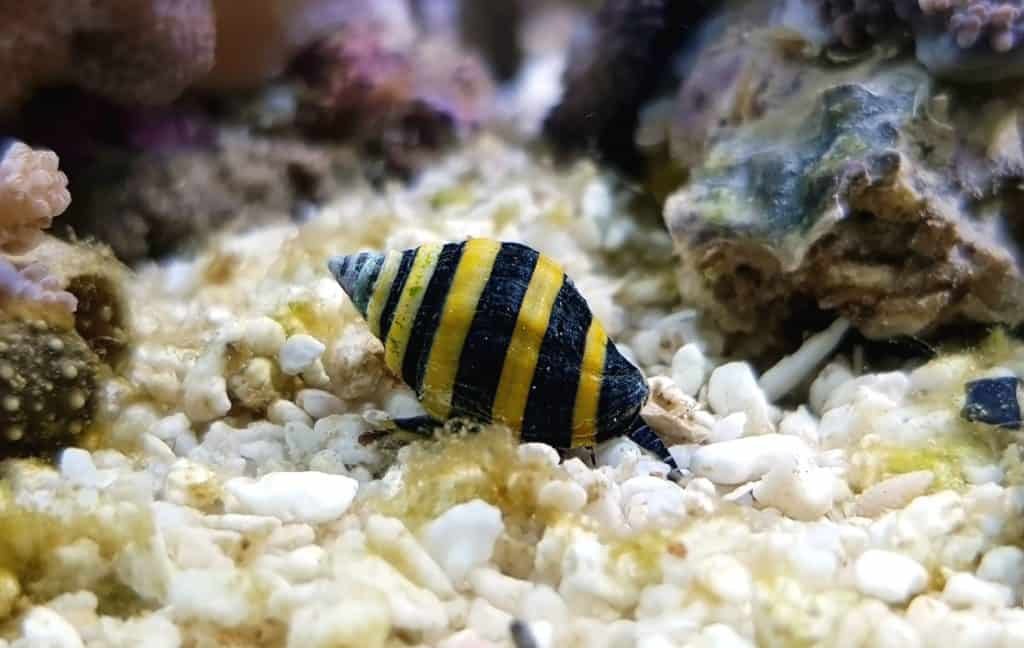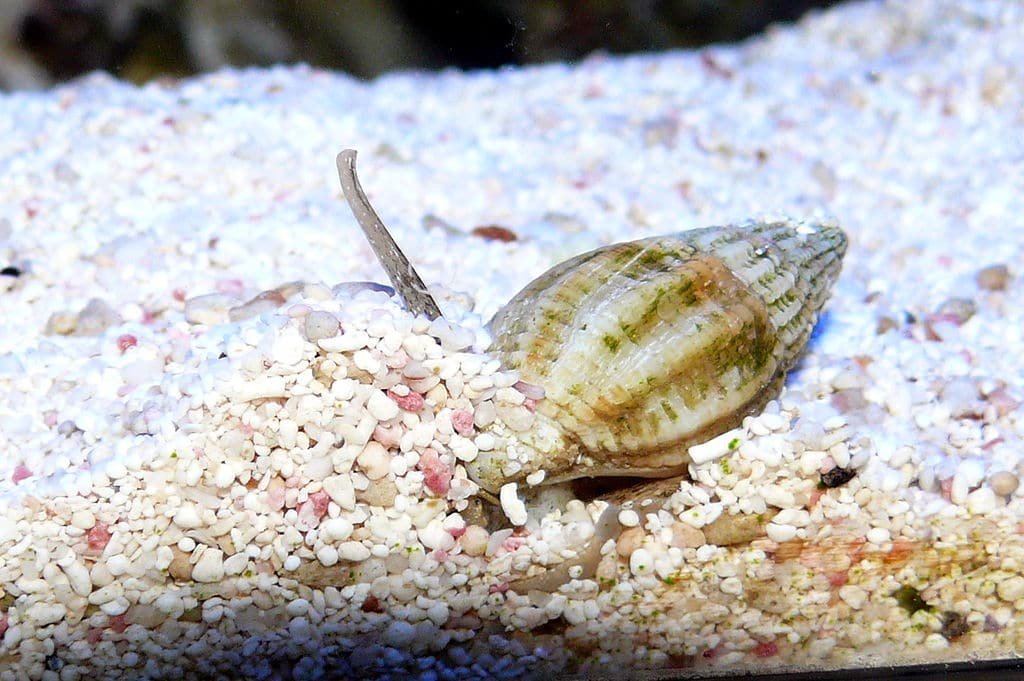 Image 1 of 1
Image 1 of 1


Astrea Snail
Astrea snails, also known as Astrea turbo snails, are a popular choice for marine aquarium enthusiasts due to their ability to consume algae and help maintain a clean and balanced ecosystem. To ensure the well-being of these fascinating creatures, several requirements need to be met:
Aquarium size: Astrea snails require a well-established marine aquarium with a sufficient size. A minimum tank size of 10 gallons is recommended to provide ample space for these snails to move and graze on algae.
Water parameters: Maintaining proper water quality is crucial for the health of Astrea snails. The recommended water temperature should range between 72°F and 78°F (22°C to 25°C). The salinity level should be maintained at around 1.023 to 1.026 specific gravity, and the pH level should ideally be between 8.0 and 8.4. Additionally, regular monitoring and maintenance of ammonia, nitrate, and nitrite levels is essential.
Substrate and Decor: Astrea snails will benefit from a substrate that is free of sharp edges or rough surfaces, as it can potentially harm their delicate foot. A sandy or fine gravel substrate is preferable. Providing a variety of rocks and coral structures in the aquarium will offer hiding places and climbing surfaces for the snails.
Lighting: Astrea snails thrive in aquariums with moderate to high lighting. This is because they rely on photosynthesis from light to supplement their diet of algae. However, it is essential to monitor the lighting intensity to prevent excessive algae growth, which may outstrip their grazing capacity.
Algae availability: Astrea snails are primarily herbivorous and feed on different types of algae. It is crucial to ensure a sufficient and continuous supply of algae in the aquarium for their grazing needs. While they consume various forms of algae, it is recommended to supplement their diet with additional sources of food, such as dried seaweed or specially formulated marine herbivore pellets.
Compatibility: Astrea snails are generally peaceful and can coexist with other peaceful fish and invertebrates. However, caution should be exercised with aggressive or predatory species that may harass or harm the snails.
Water movement: Adequate water movement in the aquarium is beneficial for Astrea snails. It helps in distributing food and oxygen throughout the tank and maintains a healthy environment. The use of powerheads or appropriately positioned aquarium filters can help create the required water flow.
Acclimation: Proper acclimation is crucial when introducing Astrea snails to a new aquarium. Gradually acclimate them to the water conditions by floating their container in the aquarium and slowly adding small amounts of aquarium water to the container over a period of time.
By meeting these requirements, you can provide a suitable habitat for Astrea snails, ensuring their well-being and allowing them to contribute to a balanced marine ecosystem by controlling algae growth.
Astrea snails, also known as Astrea turbo snails, are a popular choice for marine aquarium enthusiasts due to their ability to consume algae and help maintain a clean and balanced ecosystem. To ensure the well-being of these fascinating creatures, several requirements need to be met:
Aquarium size: Astrea snails require a well-established marine aquarium with a sufficient size. A minimum tank size of 10 gallons is recommended to provide ample space for these snails to move and graze on algae.
Water parameters: Maintaining proper water quality is crucial for the health of Astrea snails. The recommended water temperature should range between 72°F and 78°F (22°C to 25°C). The salinity level should be maintained at around 1.023 to 1.026 specific gravity, and the pH level should ideally be between 8.0 and 8.4. Additionally, regular monitoring and maintenance of ammonia, nitrate, and nitrite levels is essential.
Substrate and Decor: Astrea snails will benefit from a substrate that is free of sharp edges or rough surfaces, as it can potentially harm their delicate foot. A sandy or fine gravel substrate is preferable. Providing a variety of rocks and coral structures in the aquarium will offer hiding places and climbing surfaces for the snails.
Lighting: Astrea snails thrive in aquariums with moderate to high lighting. This is because they rely on photosynthesis from light to supplement their diet of algae. However, it is essential to monitor the lighting intensity to prevent excessive algae growth, which may outstrip their grazing capacity.
Algae availability: Astrea snails are primarily herbivorous and feed on different types of algae. It is crucial to ensure a sufficient and continuous supply of algae in the aquarium for their grazing needs. While they consume various forms of algae, it is recommended to supplement their diet with additional sources of food, such as dried seaweed or specially formulated marine herbivore pellets.
Compatibility: Astrea snails are generally peaceful and can coexist with other peaceful fish and invertebrates. However, caution should be exercised with aggressive or predatory species that may harass or harm the snails.
Water movement: Adequate water movement in the aquarium is beneficial for Astrea snails. It helps in distributing food and oxygen throughout the tank and maintains a healthy environment. The use of powerheads or appropriately positioned aquarium filters can help create the required water flow.
Acclimation: Proper acclimation is crucial when introducing Astrea snails to a new aquarium. Gradually acclimate them to the water conditions by floating their container in the aquarium and slowly adding small amounts of aquarium water to the container over a period of time.
By meeting these requirements, you can provide a suitable habitat for Astrea snails, ensuring their well-being and allowing them to contribute to a balanced marine ecosystem by controlling algae growth.







